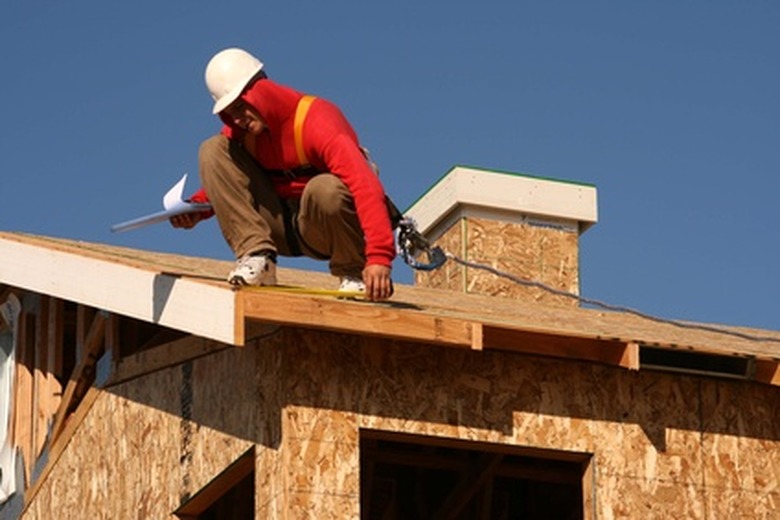How To Calculate Total Fall Distance For Fall Protection
There were a record-high 847 fall-related fatalities in U.S. workplaces in 2007, according to the Bureau of Labor Statistics. That figure fell by 20 percent the following year. To reduce these fall-related deaths and injuries, the Occupational Safety & Health Administration (OSHA) has administered safety standards that must be observed in areas at risk for fall-related accidents such as construction sites and industrial and shipping environments. Part of these regulations is the implementation of an anchored harness that attaches between a worker and a static point to catch him in case of a fall. To allow freedom of movement, there is generally some slack in the anchor line, which means the worker will fall some distance before being stopped. By obtaining a few variables, you can calculate the total fall distance incurred before these protective measures activate.
Step 1
Determine the free-fall distance. This is the distance a worker falls before the safety system begins to stop a fall. OSHA dictates this distance to be 6 feet or less. Since this is essentially a measure of the slack in the lifeline, you can determine free-fall distance by measuring the distance from the point where the clip attaches to the harness to how far down the clip naturally dangles when unattached to the harness.
Step 2
Calculate deceleration distance. This is the distance the worker falls from activation of the safety system until finally coming to a compete stop. OSHA limits this distance to 3.5 feet or less. This figure is typically stated in the fall arrest system's documentation or label.
Step 3
Estimate harness effects. Harnesses frequently have elastic properties to reduce jolting when stopping a fall. This effect can increase a fall distance to more than 2 feet, although usually most harnesses will allow less than 1 foot. As this a feature of the harness, this distance should be stated in its specifications. It is possible that this distance would be zero, if the safety feature is already addressed by the lifeline.
Step 4
Determine the vertical elongation. This is the stretch distance incurred by the lifeline itself and is implemented to reduce jolting during when stopping a fall. Like the harness, this is a feature of the lifeline, so the distance should be stated in its specifications.
Step 5
Estimate a safety factor to ensure proper clearance below the worker. This can be any number you decide upon, but factoring in some kind of safety margin will help ensure proper clearance, in case of a fall.
Step 6
Add the values for free-fall distance, deceleration distance, harness effects, vertical elongation and safety factor to calculate the total fall distance. As an example, if you determined the above values were 4 feet, 3 feet, 1 foot, 3 feet and 1 foot, respectively, you would have a total fall distance of 12 feet.
Cite This Article
MLA
Taylor, C.. "How To Calculate Total Fall Distance For Fall Protection" sciencing.com, https://www.sciencing.com/calculate-fall-distance-fall-protection-7552062/. 24 April 2017.
APA
Taylor, C.. (2017, April 24). How To Calculate Total Fall Distance For Fall Protection. sciencing.com. Retrieved from https://www.sciencing.com/calculate-fall-distance-fall-protection-7552062/
Chicago
Taylor, C.. How To Calculate Total Fall Distance For Fall Protection last modified March 24, 2022. https://www.sciencing.com/calculate-fall-distance-fall-protection-7552062/
